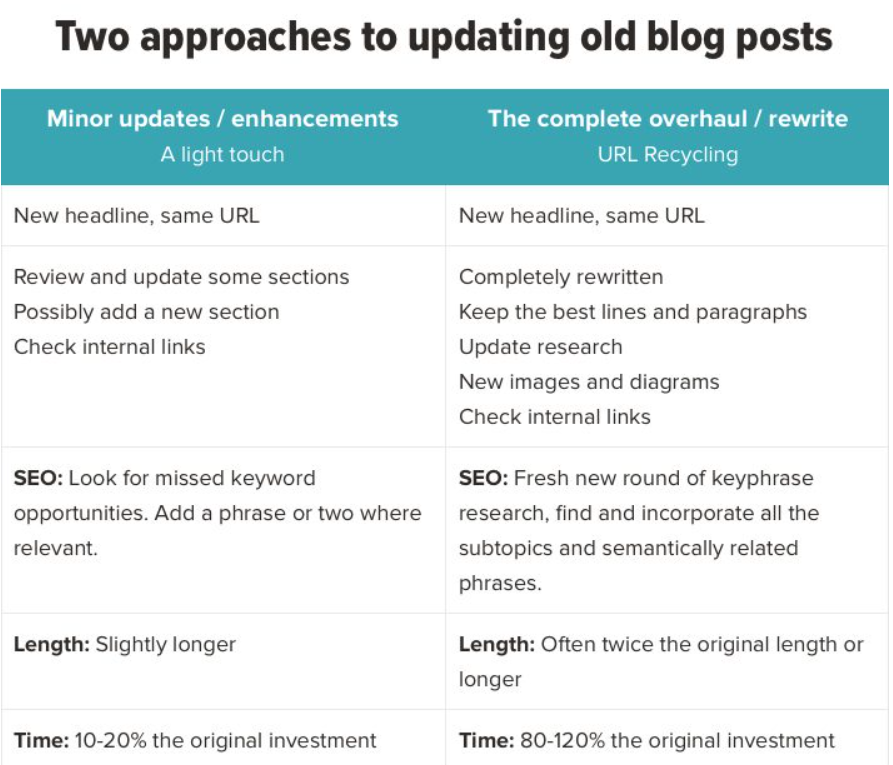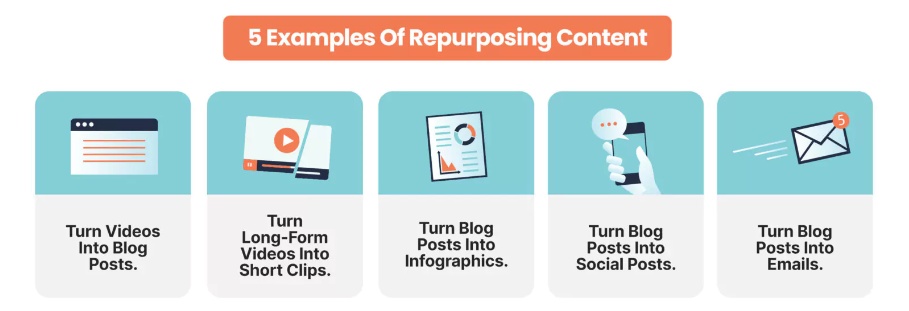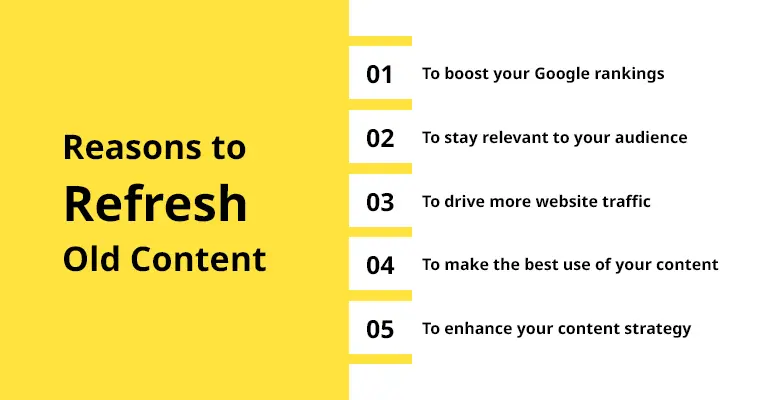Unlock the secret to reviving your old blog posts and attracting new readers with powerful tips and tricks revealed inside.

Image courtesy of via DALL-E 3
Table of Contents
- Introduction: The Magic of Republishing Your Blog
- Understanding the Concept of Republishing
- Analyzing Your Old Blog Posts
- Updating Content and Structure
- Optimizing for SEO
- Promoting Your Republished Post
- Measuring Success
- Keeping Content Evergreen
- Creating a Republishing Schedule
- Conclusion: The Benefits of Republishing
- FAQs
Introduction: The Magic of Republishing Your Blog
Have you ever thought about giving new life to your old blog posts? That’s where the magic of republishing comes in! Republishing your blog means updating and refreshing your existing content to make it even better than before. It’s like giving your blog a makeover, and the best part is, it can bring in new readers and more traffic to your site. Let’s explore why republishing your blog can be a fantastic idea!
When you republish your old posts, you are not only breathing new life into your content but also reaching a wider audience. Imagine if your blog post, which was buried deep in the archives, suddenly gets a fresh look and appears at the top of your blog page. This can attract readers who might have missed it the first time around. With more eyes on your content, you have a greater chance of engaging with a larger audience and building a loyal following.
Republishing your blog also helps keep your website current and relevant. As time goes by, information and trends change, and what was once popular may become outdated. By updating your old posts with new information, latest statistics, or improved visuals, you show your readers that you care about providing them with up-to-date and valuable content. This not only benefits your audience but can also boost your search engine rankings, making it easier for new readers to discover your blog.
So, if you have been wondering how to breathe new life into your blog and attract more traffic, republishing your old posts might just be the magic trick you need. Stay tuned as we dive deeper into the world of republishing and discover how to turn your old content into fresh, engaging blog posts that captivate your audience!
Understanding the Concept of Republishing
When we talk about republishing blog posts, we’re basically giving our old content a fresh new look to attract more readers and bring in new traffic. Imagine it like giving your favorite toy a makeover to make it more exciting and appealing to play with again!
What is Republishing?
Republishing means going back to your older blog posts and making updates to improve them. It’s like adding a new coat of paint to a picture to make it look brighter and more eye-catching. By updating your old content, you can keep it relevant and interesting for your readers.
Why Republishing is Important
Republishing is essential because it helps your blog in many ways. When you refresh your old posts, you can boost your SEO (Search Engine Optimization), which means more people can find your blog when they search online. It also gives you a chance to reach new audiences who may not have seen your older content before. By keeping your blog posts fresh and up-to-date, you show readers that you’re always on top of things!
Analyzing Your Old Blog Posts
Before deciding which of your old blog posts to refresh and republish, it’s essential to analyze them to determine their value and potential. This step will help you identify which posts have the highest impact and are worth updating to attract new traffic to your blog.

Image courtesy of contentatscale.ai via Google Images
Identifying High-Value Posts
To begin, look at your analytics to identify which posts have been the most popular in terms of traffic, engagement, and shares. These high-value posts are a good starting point for republishing, as they already have proven appeal to your audience. You can use tools like Google Analytics to track these metrics and make informed decisions.
Checking for Outdated Information
Next, review each old blog post for any outdated information or references that may need updating. Make sure the content is accurate, relevant, and aligns with current trends and best practices. Look for statistics, examples, and links that need to be refreshed to maintain the credibility of your post.
Updating Content and Structure
When updating old blog posts, it’s essential to incorporate new information to keep your content relevant and engaging. This can include adding the latest data, trends, or insights related to your post’s topic. By providing fresh information, you not only appeal to your existing readers but also attract new ones seeking up-to-date content.
Enhancing the Format
In addition to updating the content, enhancing the structure and format of your old blog posts can make them more visually appealing and user-friendly. Consider breaking up the text with subheadings to improve readability, incorporating relevant images to enhance understanding, and using bullet points to highlight key points. These formatting elements not only make your post more attractive but also help with SEO by improving user experience.
Optimizing for SEO
When it comes to republishing your old blog posts, optimizing them for search engines is crucial to attract more readers. SEO, which stands for Search Engine Optimization, helps make your content more visible online. Here are some simple steps you can take to enhance the SEO of your republished posts:

Image courtesy of bloggingx.com via Google Images
Choosing the Right Keywords
Keywords are specific words or phrases that people might use when searching for information online. To improve your SEO, select relevant keywords that are commonly searched for in your niche. For example, if you’re writing about healthy recipes, keywords like “easy dinner ideas” or “quick meal prep” could be suitable choices. Make sure to naturally integrate these keywords into your content, including in your post’s title, headings, and throughout the text.
Using SEO Tools
There are various tools available to help you optimize your blog posts for search engines. One popular tool is the Google Keyword Planner, which can assist you in identifying relevant keywords for your content. By using tools like this, you can refine your keyword selection process and boost your chances of ranking higher in search engine results. Remember, the goal is to make it easier for people to find your valuable content online.
Promoting Your Republished Post
Once you have updated and refreshed your old blog post, it’s important to promote it so that more readers can discover your content. Here are some effective ways to get the word out about your republished post:
Sharing on Social Media
One of the best ways to promote your republished post is by sharing it on social media platforms like Facebook, Twitter, and Instagram. Craft engaging captions that entice users to click on the link and check out your updated content. You can also use relevant hashtags to reach a larger audience and spark conversations around your blog post.
Email Newsletters
Email newsletters are a fantastic tool for informing your subscribers about your republished content. Create a compelling email that showcases the improvements you’ve made to the post and highlights why it’s worth revisiting. Consider segmenting your email list based on interests or preferences to ensure that the right audience receives the news about your refreshed blog post.
Measuring Success
Tracking the performance of your republished blog posts is essential to understand how well they are engaging readers and attracting traffic. By using analytics tools, you can gather valuable data that will help you refine your republishing strategies for even greater success.

Image courtesy of contentatscale.ai via Google Images
Using Google Analytics
Google Analytics is a powerful tool that provides detailed insights into the performance of your website and individual pages. By navigating to the “Behavior” section and selecting “Site Content” and then “All Pages,” you can see which of your republished posts are receiving the most traffic.
Look for metrics like pageviews, average time on page, bounce rate, and conversion rate to assess how well your republished posts are resonating with your audience. Analyzing this data can help you identify which topics are popular and which ones may need further optimization.
Adjusting Future Strategy
Once you have gathered and analyzed data from Google Analytics, it’s time to adjust your future republishing strategy based on what you’ve learned. If you notice that certain types of content perform better than others, consider focusing on those topics for future updates.
Experiment with different headlines, images, or calls to action to see what resonates most with your audience. By continuously iterating on your republishing efforts and incorporating insights from analytics, you can refine your strategy and drive even more traffic to your blog.
Keeping Content Evergreen
Creating content that stands the test of time is essential for a successful blog. Evergreen content is like a sturdy oak tree, staying solid and relevant no matter the season. Let’s explore how you can keep your blog content fresh and timeless.
Choosing Evergreen Topics
When selecting topics for your blog posts, aim for timeless themes that won’t lose relevance quickly. Consider writing about fundamental concepts, beginner guides, or tips that remain valuable to readers over an extended period. Avoid trends that might fizzle out in a few months.
Regular Updates
Even evergreen content needs a little TLC now and then. Periodically review your older posts to ensure they’re still accurate and up-to-date. Update statistics, refresh examples, and make any necessary corrections. By keeping your content current, you maintain its value to readers.
Creating a Republishing Schedule
When it comes to republishing your old blog posts, having a well-thought-out schedule can make a significant difference in the success of your efforts. By planning and setting goals for republishing, you can ensure consistency and maximize the impact of your revamped content. Let’s dive into how you can create a republishing schedule that works for you.

Image courtesy of www.serpple.com via Google Images
Setting Goals
Before diving into republishing your old blog posts, it’s essential to establish clear and realistic goals. Consider how many posts you want to update each month and what outcomes you hope to achieve through republishing. Setting specific goals can help keep you focused and motivated throughout the process.
Using a Content Calendar
One effective way to stay organized and consistent with your republishing efforts is to utilize a content calendar. A content calendar allows you to plan ahead, schedule when each post will be updated and republished, and track your progress easily. By incorporating republishing tasks into your content calendar, you can ensure that you maintain a steady flow of refreshed content without feeling overwhelmed.
Conclusion: The Benefits of Republishing
After understanding the process of republishing old blog posts, you might be wondering about the benefits it can bring to your blog. Let’s recap the main advantages of republishing and why it can be a game-changer for your content strategy.
The Power of Freshness
One of the key benefits of republishing your blog posts is breathing new life into your old content. By updating and revamping your posts, you keep them relevant and engaging for your readers. This not only helps in retaining existing readers but also attracts new ones who stumble upon your refreshed content.
Boosting SEO
Search engines love fresh and updated content. When you republish your blog posts with new information, keywords, and meta tags, you signal to search engines that your content is current and valuable. This can improve your search engine ranking and drive more organic traffic to your blog.
Increased Traffic and Engagement
Republishing old blog posts presents an opportunity to promote them again on social media, through email newsletters, and other channels. By reaching out to your audience multiple times with valuable content, you can increase traffic to your blog and foster deeper engagement with your readers.
Cost-Effective Content Strategy
Creating new content from scratch can be time-consuming and resource-intensive. Republishing your old posts allows you to leverage existing material and get more mileage out of your content. It’s a cost-effective way to keep your blog active and provide value to your audience.
Overall, the benefits of republishing blog posts are clear: more traffic, better SEO, increased engagement, and a sustainable content strategy. By incorporating republishing into your content plan, you can ensure that your blog stays fresh, relevant, and successful in the long run.
Want to turn these SEO insights into real results? Seorocket is an all-in-one AI SEO solution that uses the power of AI to analyze your competition and craft high-ranking content.
Seorocket offers a suite of powerful tools, including a Keyword Researcher to find the most profitable keywords, an AI Writer to generate unique and Google-friendly content, and an Automatic Publisher to schedule and publish your content directly to your website. Plus, you’ll get real-time performance tracking so you can see exactly what’s working and make adjustments as needed.
Stop just reading about SEO – take action with Seorocket and skyrocket your search rankings today. Sign up for a free trial and see the difference Seorocket can make for your website!
FAQs
What if my old posts are too outdated?
If you find that your old blog posts are too outdated, there are a few strategies you can use to revamp them. First, consider updating the information with current data, trends, or insights. This can help make the content more relevant to your audience. Additionally, you can rewrite sections that are no longer accurate or remove them entirely. If the post requires extensive changes, it may be best to create a new post on the same topic instead.
How often should I republish old posts?
When it comes to republishing old posts, the frequency will depend on factors like your blog activity and content volume. A general guideline is to aim for republishing one to two posts per month. This allows you to consistently refresh your content without overwhelming yourself or your readers. However, it’s essential to analyze your blog’s performance and audience engagement to determine the ideal republishing frequency for your specific situation.







